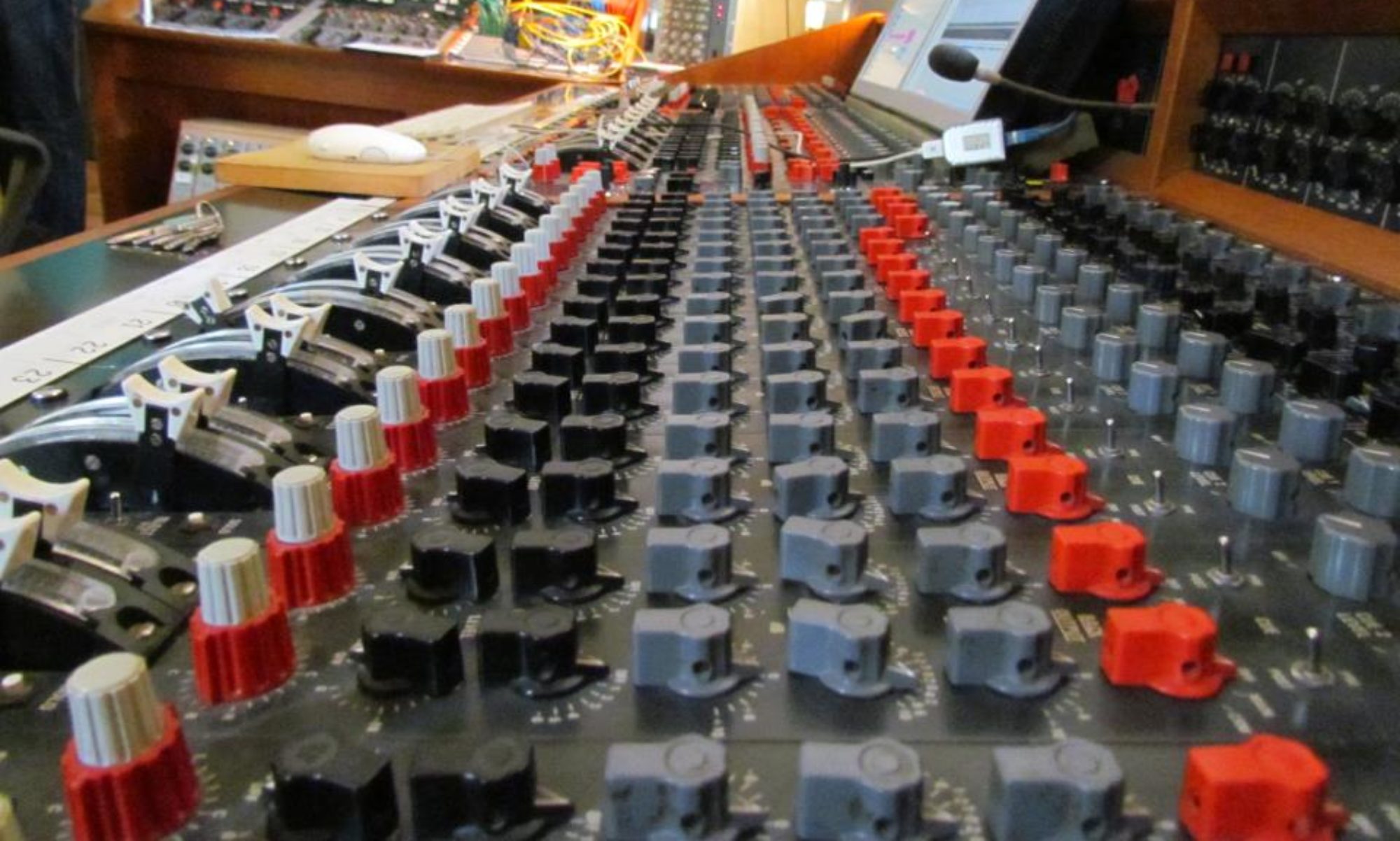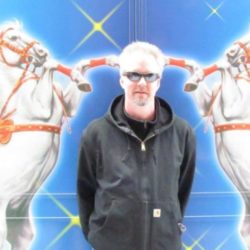Jabon just released a track for the End of Times! Hurry up and download it before you die! You’ve got 2 minutes!
Paper Trails
Here’s a video of Collision Theory from back in June. This segment is called “Paper Trails”. Sound Design and composition by…you know
Black Flag – Jockey Club 1984
That’s me in the front!
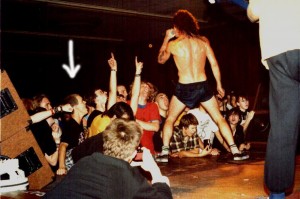
Raucous Bacchus
Tonight’s the Night!!!!
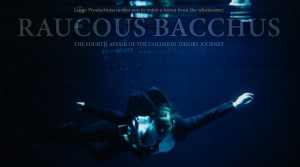
Vensaire – Apollonian
New Video from the Vensaire EP issued this recently. Look for a full length that I recorded this past summer to be issued 2nd quarter 2013. Enjoy this now!!
What Does a Producer Do?
Excellent article that describes what I do for a living. Read it at BMI here
What a Producer Does and Why You Should Consider Using One
By Cliff Goldmacher
Dec 11 2012
Facebook Twitter
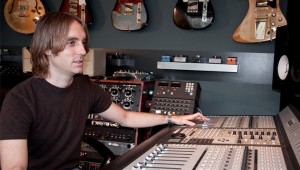
Working as a producer for the last ten years, I’ve recorded with all kinds of artists from “fresh off the boat” newbies to artists whose experience in the world of music doubles or even triples my own. In every case, my role as a producer stays essentially the same. It’s that role that I’m going to describe in this article.
What is a Producer?
The best way I know to describe what a producer does comes in the form of this analogy: A producer is to a recording as a director is to a film. When it comes to making a film, the buck essentially stops with the director. It’s the director who steers the ship working with everyone from the actors to the technical editors in order to achieve his or her overall vision of the movie. It is exactly that way with a producer when it comes to making a recording. Not only must the producer have the experience to work with the studio engineer (often possessing the technical expertise to engineer the project themselves) but a producer must also have the musical understanding to help the artist with everything from song choice, structure and arrangement, to the all-important vocal performances that are vital in giving a recording its personality. In short, a producer provides the experience and necessary perspective to guide a recording from start to finish.
Producer Backgrounds
Producers can come from a variety of backgrounds. Here are the four most common and what each brings to the process, but, typically, producers have experience in more than one of these areas.
1) Producer/Songwriter ” Since at its essence, a recording is dependent on the quality of the song, the producer/songwriter is heavily involved in the song selection process. Not only does this type of producer have experience in knowing what does and doesn’t work when it comes to pre-existing songs, but often this producer will co-write songs with the artist for a given project.
2) Producer/Musician ” Here, it’s often an instrumental and music theory background that gives this type of producer their experience. They have first-hand knowledge when it comes to working with musicians and knowing what instrumental approach will work best in a given situation.
3) Producer/Engineer ” In this case, the producer’s primary experience comes from actual recording (i.e., placing microphones on drum kits, recording vocals and mixing albums). By becoming an expert in the nuts and bolts of the recording process, an engineer/producer can make the recording process a smooth one for the artist.
4) Producer/Music Fan ” This is someone who lives and breathes music and has the instincts to guide artists and session musicians through the recording process without necessarily having had the “hands on” experience of being a songwriter, musician or engineer themselves. They often bring great perspective to a situation where being too close to any one part of the process might compromise the overall recording.
What Do Producers Do?
Producers can be involved in many different aspects of a recording. Some producers are very “hands off,” acting mostly as the voice of experience and perspective for artists who already have a fairly clear idea of who they are and where they’re headed. On the other end of the spectrum are the producers who are involved in every element of the recording, from co-writing the songs, to engineering, to playing one or even all of the instruments. In some, but certainly not all of these cases, the resulting recordings have such a distinctive sound that the producer becomes as associated with the recording as the artist themselves. For the record, no one way takes precedence over any other for producing a recording. The only measure of a producer that matters is whether or not the resulting recording is satisfying to everyone involved. As most producers operate somewhere in between minimal and complete involvement, here are the main areas where most producers do their work.
1) Pre-production ” This includes working with the artist to decide if the songs are as good as they can be and, ultimately, which songs would work best as a group for an album release. It also includes deciding on the overall sound of a recording which involves deciding which session musicians/instruments would be best suited to achieve the sound and feel of a particular song.
2) Instrumental Recording/Arrangement ” At this point, the producer works with the assembled musicians and helps direct their performances in the studio in order to achieve a cohesive sound for the recording.
3) Vocals – Finally, because the typical music listener responds first to the voice of the singer, one of the most important roles of the producer is working with the vocalist to help them give their best and most sincere performance of their material. It is extremely difficult for even the most experienced vocalists to have any perspective on their performance while it’s happening. For this reason, a producer is the voice of reason and experience who knows how to encourage a vocalist to do one more vocal pass or helps them realize that it would be better to take a break and come back to fight another day.
How Do I Find A Producer?
For those who are new to the process of recording, whether it’s an album project or even a song demo, it is unclear where to look to find a producer for your project. Generally speaking, word of mouth in your music community serves as the best, most organic way to find a producer right for your project. Another effective way to find a producer, particularly if you’re interested in doing a whole recording project, would be to look at the liner notes on some of your favorite independent CD projects made in the city where you plan to record. Often, those producers are available for hire and it’s just a matter of getting their contact information, which the CDs usually include. Finally, there’s no rule that says you can’t contact a well-known/successful producer whose work you admire. Maybe they will be too busy or too expensive to work with, but you never know. If you’re respectful in your request, there’s no reason not to try.
Conclusion
At the end of the day, it’s a good working relationship and the trust between artist and producer that makes for the best results. So, be sure that you not only like a producer’s work but feel comfortable working with them as well. You’ll be spending a lot of time with this person and trusting them with your art, so make sure that you feel like the producer you choose is willing to give you and your music the attention necessary to get a great recording.
Good luck!
Bio
Cliff Goldmacher is a songwriter, producer, session musician, engineer, author and owner of recording studios in Nashville, TN and Sonoma, CA.
Cliff’s site, http://www.EducatedSongwriter.com, is full of resources for the aspiring songwriter including a brand new HD video series available at the link below.
http://www.EducatedSongwriter.com/video-podcast-series
Cliff’s company, http://www.NashvilleStudioLive.com, provides songwriters outside of Nashville with virtual access to Nashville’s best session musicians and singers for their songwriting demos.
Raucous Bacchus
This Saturday is the next installment of for Collision Theory which is a year long project I’m doing sound design and composition for as a member of the Lingo Dance Company. This is a great little segment that appeared on Art Zone with Nancy Guppy. The segment starts at 11:38. If you want to go to this party, you need to RSVP in advance.
Jabon – Goodbye 12-12-12 12:12:12 am/pm
Long time client Jabon has issued a new track especially for 12-12-12. It is called Goodbye and it’s his way of saying thanks for the great run he’s had in the past. It’s a way of saying Goodbye since the world ends on the 21st.
Official Junk Trailer!!
I did the sound design for this film. Already it has won Best Narrative Feature at the Austin Film Festival
